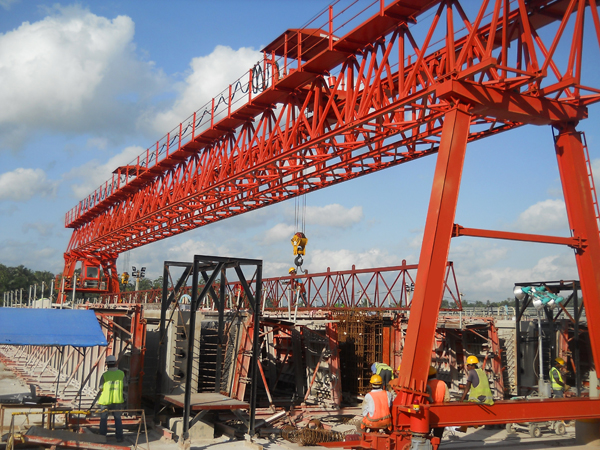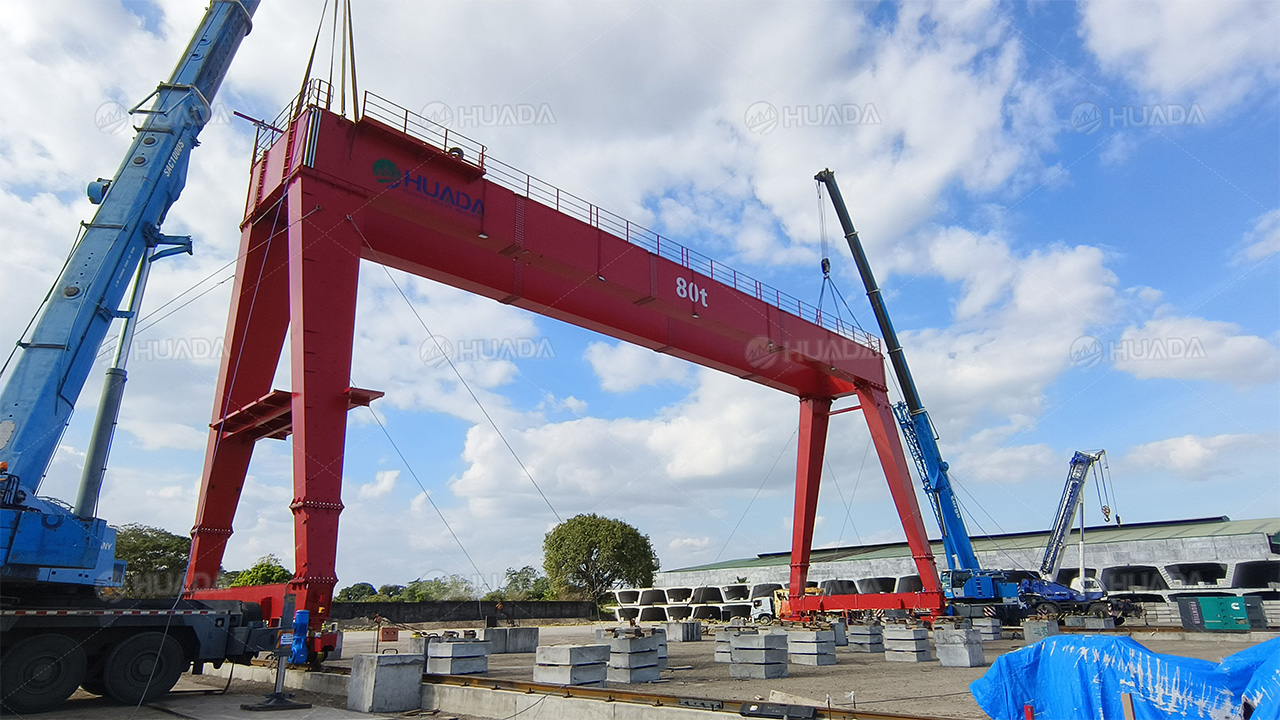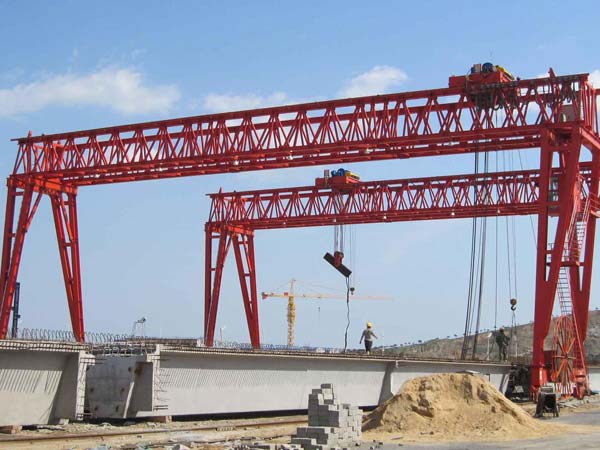How to Customize Gantry Crane Design for Specific Industries
Jun. 28th, 2024
Gantry cranes are widely used in construction, manufacturing, wind power, steel mills, shipping and marine industries. They are indispensable for lifting and transporting heavy objects efficiently. However, the requirements for gantry cranes can vary widely across industries. In order to optimize their performance and ensure safety, gantry crane designs must be customized to meet the needs of specific industries. Let's explore how to customize gantry crane designs for specific industries!
Understanding Industry Requirements
Each industry has unique operational demands that influence gantry crane design. Understanding these requirements is the first step in customizing a gantry crane. Factors to consider include:
1. Load Capacity: Different industries handle different types of loads. For instance, the construction industry may require cranes with high load capacities to lift heavy materials, while the manufacturing sector might need cranes that can handle lighter, but more frequent, loads.
2. Operational Environment: The environment in which the crane operates also impacts its design. Cranes used in outdoor environments, such as shipyards, need to withstand weather conditions, while those used indoors, like in factories, require compact designs for maneuverability.
3. Frequency of Use: The frequency and duration of crane use can affect the design. Industries with continuous operations, like steel mills, need robust and durable designs, while those with intermittent use can opt for less heavy-duty options.
4. Specific Applications: Customizing gantry crane design also involves considering specific applications within the industry. For example, cranes in the wind power industry need to handle large and bulky components, while those in the automotive industry must manage precision parts.
Customizing Gantry Crane Design
Once the industry requirements are clear, the next step is to customize the gantry crane design accordingly. Here are some key aspects to consider:
1. Material Selection
The choice of materials in
gantry crane design is critical for performance and durability. For industries exposed to corrosive environments, such as marine and chemical industries, using corrosion-resistant materials like stainless steel or coated metals is essential. In contrast, industries prioritizing lightweight and high-strength materials may opt for aluminum alloys.
2. Structural Design
The structural design of the gantry crane must align with the specific needs of the industry. For heavy-duty applications, reinforced structures with high load-bearing capacities are necessary. In contrast, industries requiring high maneuverability might benefit from more compact and flexible designs.
3. Power and Drive Systems
The power source and drive systems play a vital role in the customization of gantry crane design. Electric-powered cranes are ideal for industries requiring low emissions and quiet operations, such as indoor manufacturing facilities. On the other hand, diesel-powered cranes might be more suitable for outdoor environments where power supply is a challenge.
4. Mobility and Flexibility
Mobility is a significant factor in gantry crane design. Mobile gantry cranes with wheels or tracks are ideal for industries needing to move loads across large areas, like construction sites or shipyards. Conversely, fixed gantry cranes are suitable for stationary operations, such as assembly lines in manufacturing plants.
5. Control Systems
Advanced control systems enhance the functionality and safety of gantry cranes. Customizing control systems to include features like remote operation, automated lifting, and safety interlocks can greatly benefit industries with specific operational needs. For instance, automated systems are crucial in precision-driven industries like electronics manufacturing.
6. Safety Features
Safety is paramount in
gantry crane design. Customizing safety features based on industry requirements helps prevent accidents and injuries. This can include load limit indicators, emergency stop buttons, anti-collision systems, and fail-safe mechanisms. Industries with stringent safety standards, such as aerospace and nuclear sectors, particularly benefit from these customizations.
Case Studies
1. Construction Industry
In the construction industry, gantry cranes must handle heavy and bulky materials like steel beams and concrete blocks. Customizing gantry crane design for this industry involves using high-strength materials and reinforced structural designs. Additionally, incorporating wheels for mobility allows cranes to move around construction sites easily.
2. Manufacturing Industry
For the manufacturing industry, particularly in automotive and electronics sectors, precision and flexibility are key. Customizing gantry crane design for this industry includes using lightweight materials for ease of movement and integrating advanced control systems for precise operations. Compact designs are also essential for maneuvering in confined spaces.
3. Shipping and Marine Industry
The shipping and marine industry requires gantry cranes that can withstand harsh weather conditions and corrosive environments. Customizing gantry crane design for this industry involves using corrosion-resistant materials and robust structural designs. Additionally, incorporating mobility features enables cranes to move along docks and shipyards efficiently.
4. Wind Power Industry
The wind power industry deals with large and heavy components like turbine blades and towers. Customizing
gantry crane design for this industry requires high load capacities and extended lifting heights. Using advanced materials for strength without excessive weight and integrating safety features to handle the bulky components are also crucial.
5. Steel Mills
In steel mills, gantry cranes operate in extreme conditions with high temperatures and heavy loads. Customizing gantry crane design for this industry involves using heat-resistant materials and ensuring the structural design can handle continuous and heavy-duty operations. Advanced cooling systems and durable power sources are also essential.
Conclusion
Customizing gantry crane design for specific industries involves a thorough understanding of industry requirements and careful consideration of various design aspects. By selecting appropriate materials, structural designs, power systems, mobility features, control systems, and safety mechanisms, gantry cranes can be optimized to meet the unique needs of different sectors. This customization not only enhances efficiency and performance but also ensures safety and longevity of the equipment. As industries continue to evolve, so too will the demands on gantry crane design, making customization an ongoing and essential process.
Huada has a professional team to customize the design of gantry cranes, meet customers' customization requirements and details online in real-time, and tailor exclusive equipment for customers' industrial needs, which not only meets the customer team's preference needs but also meets the operational needs of efficient and safe construction, and enables customers to have long-term trust in the Huada brand with high performance and high reusability. Feel free to
contact us!


